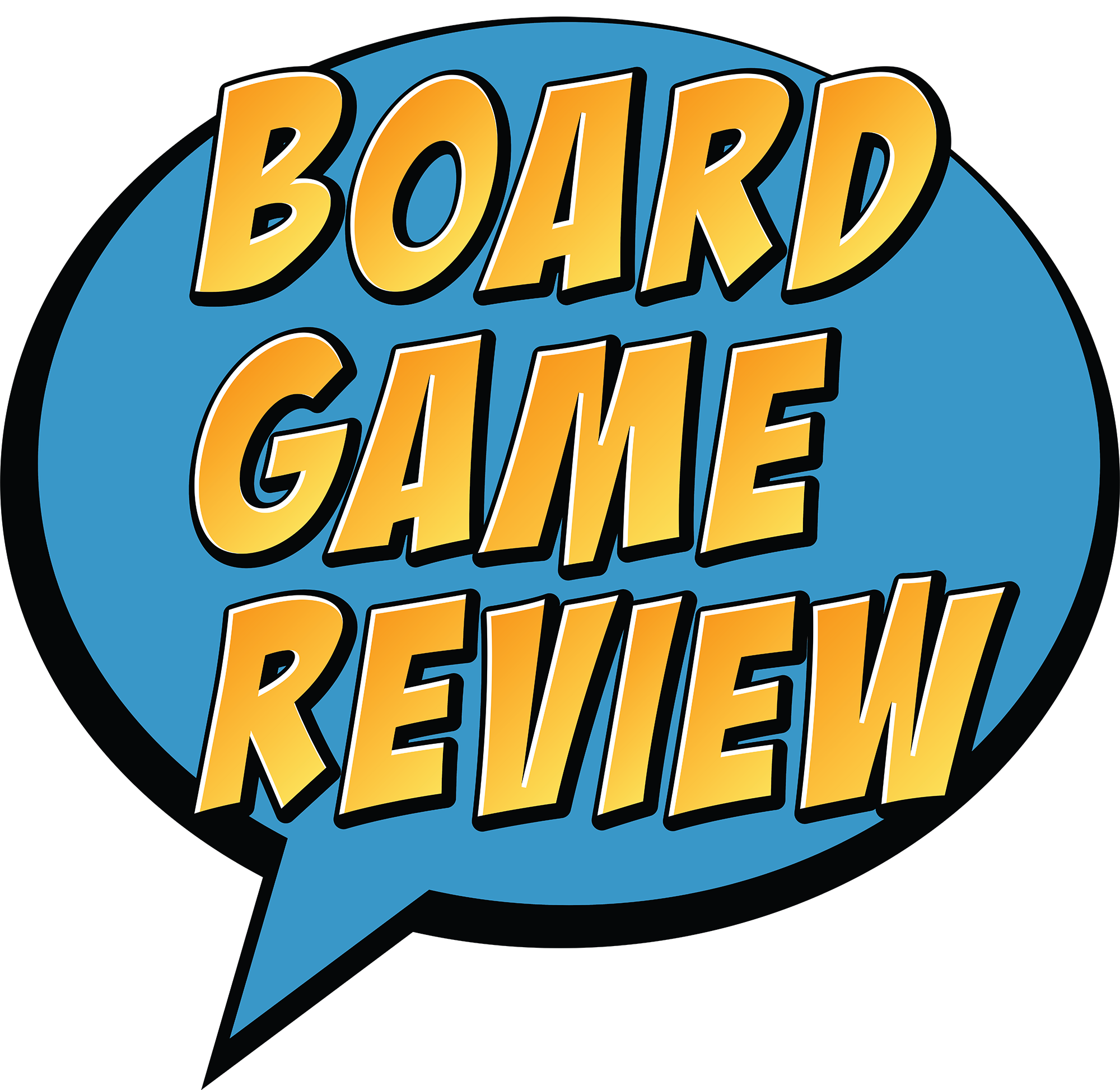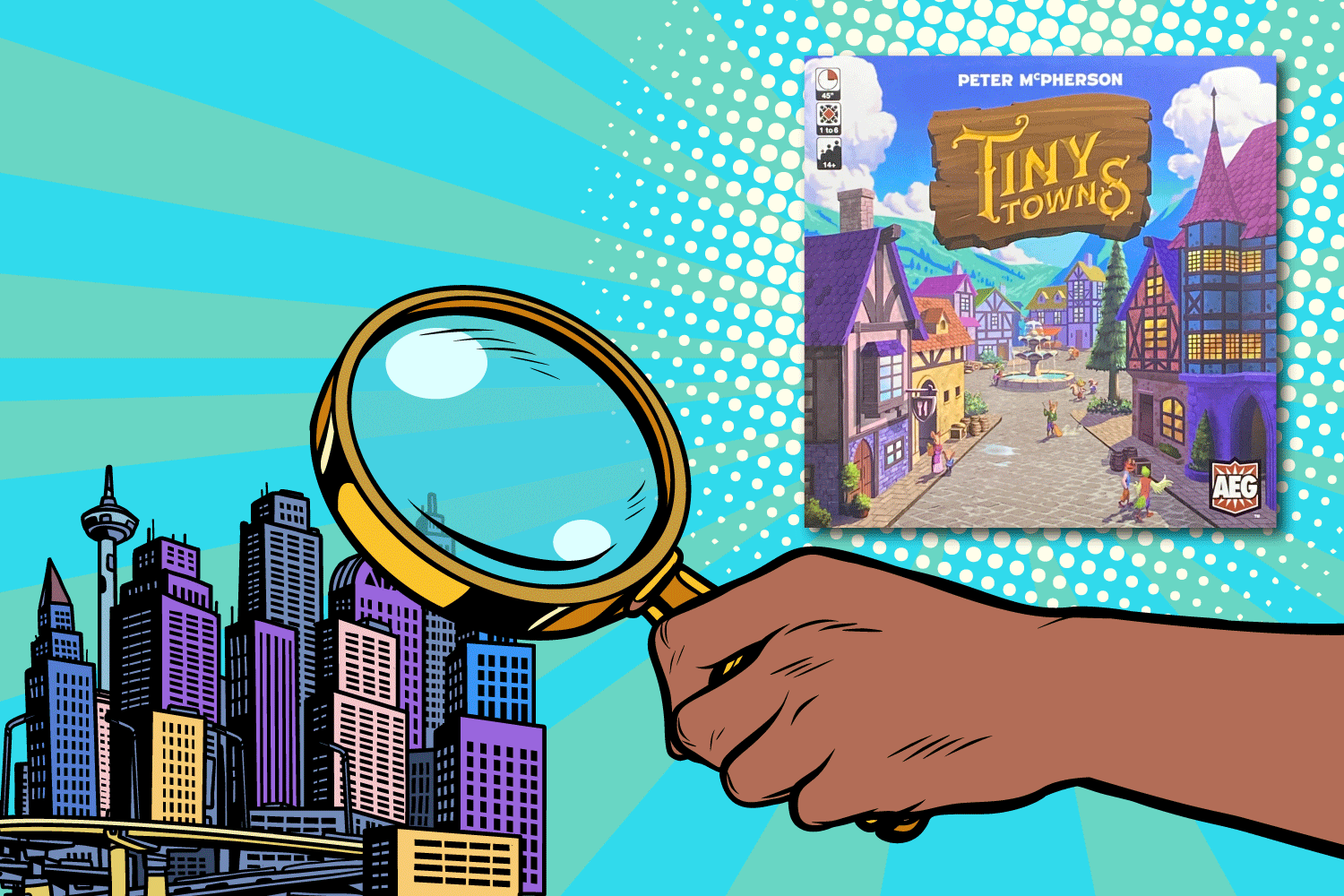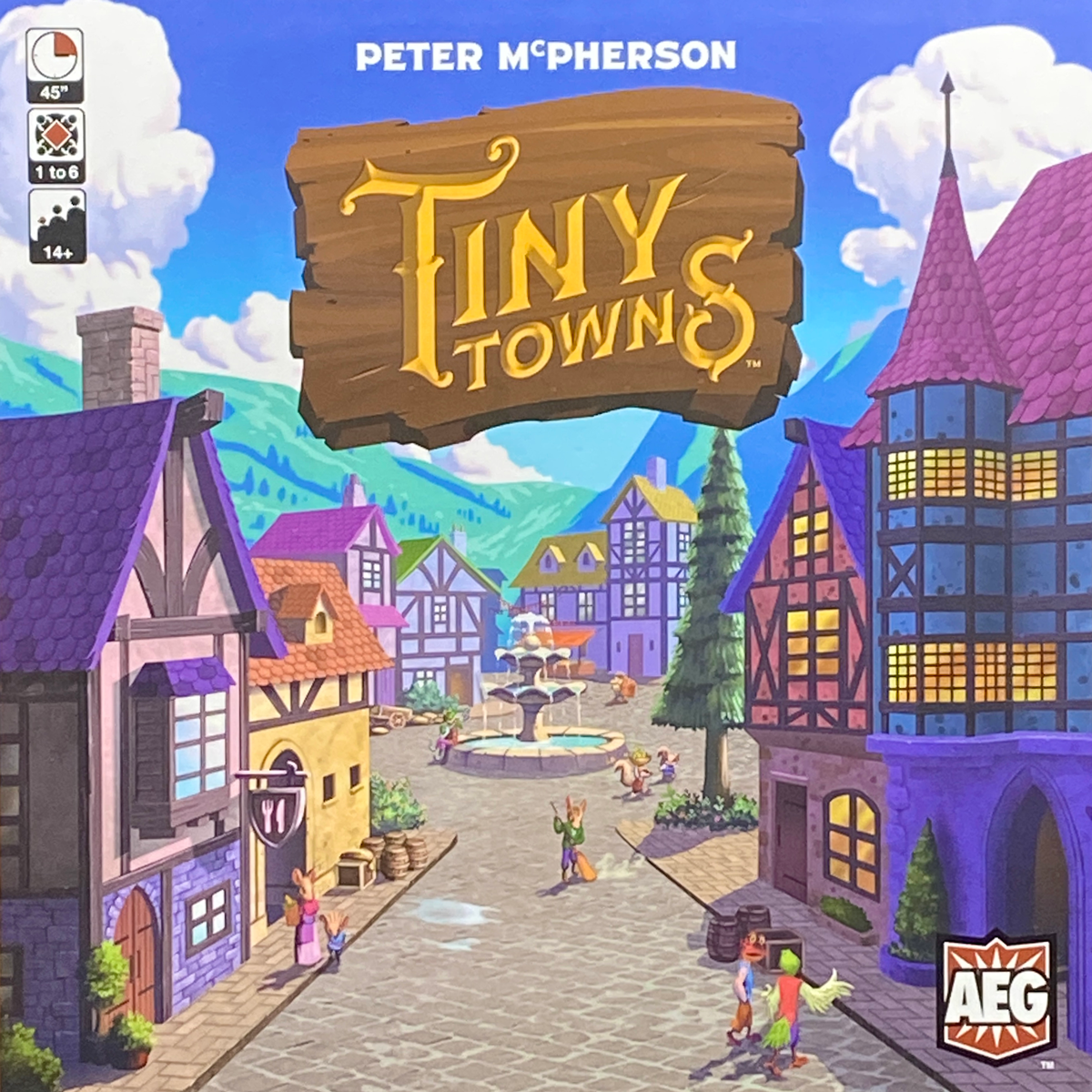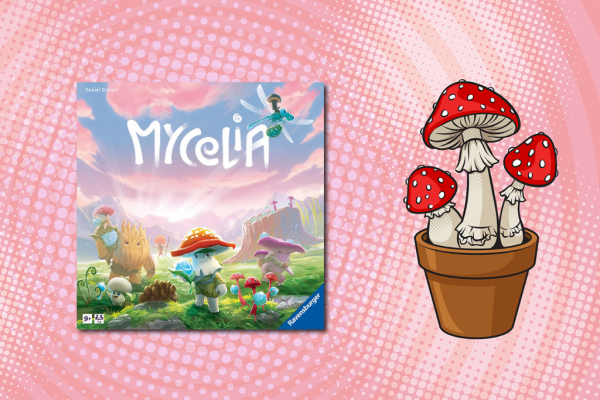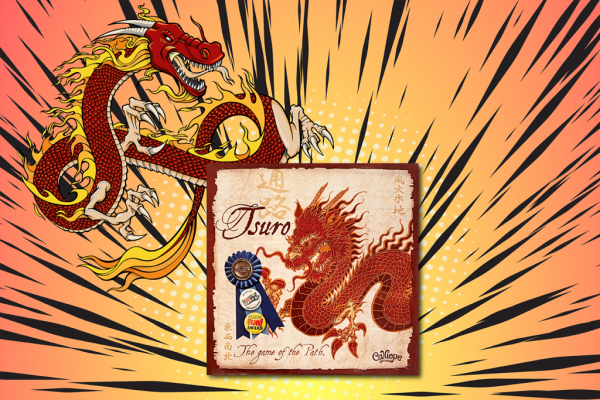Tiny Towns Review
Advert: this game was gifted by Alderac Entertainment Group, this has not affected our opinion.
When I was little, I used to get inspired and a little bit jealous of my older sister’s creating little fairy dwellings in the back garden. Using physalis as lanterns and making dens out of sticks and leaves. Since then I have always been a little bit fascinated by creating miniature worlds. Whether that was Warhammer scenery, model railways, or SimCity and the Sims on the PC, building tiny towns has always appealed. Has this introduction lead nicely into me introducing a review of Tiny Towns? I’m not sure, it’s a bit twee, but it will have to suffice because as you’ve probably gathered, this IS the introduction to my review of Tiny Towns!
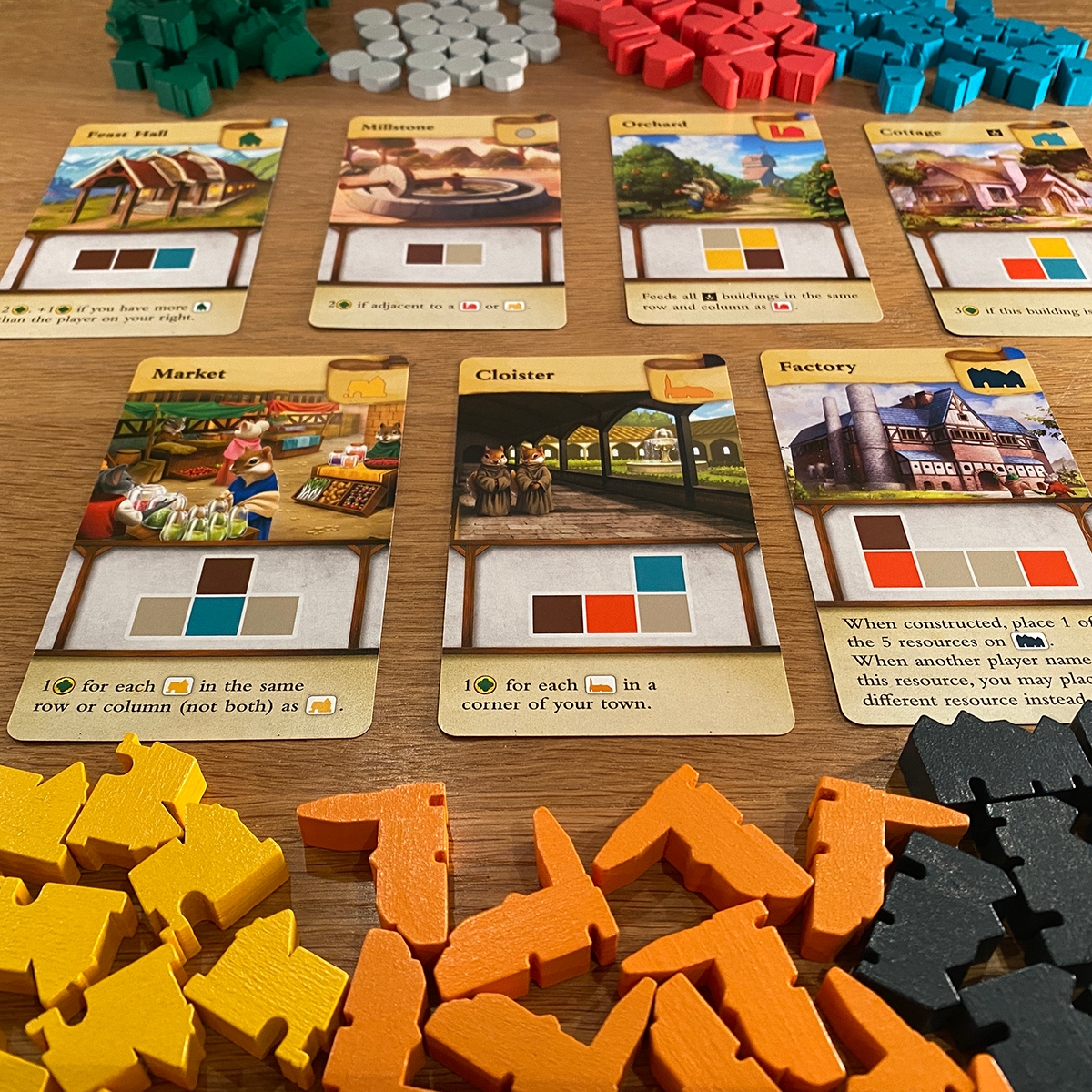
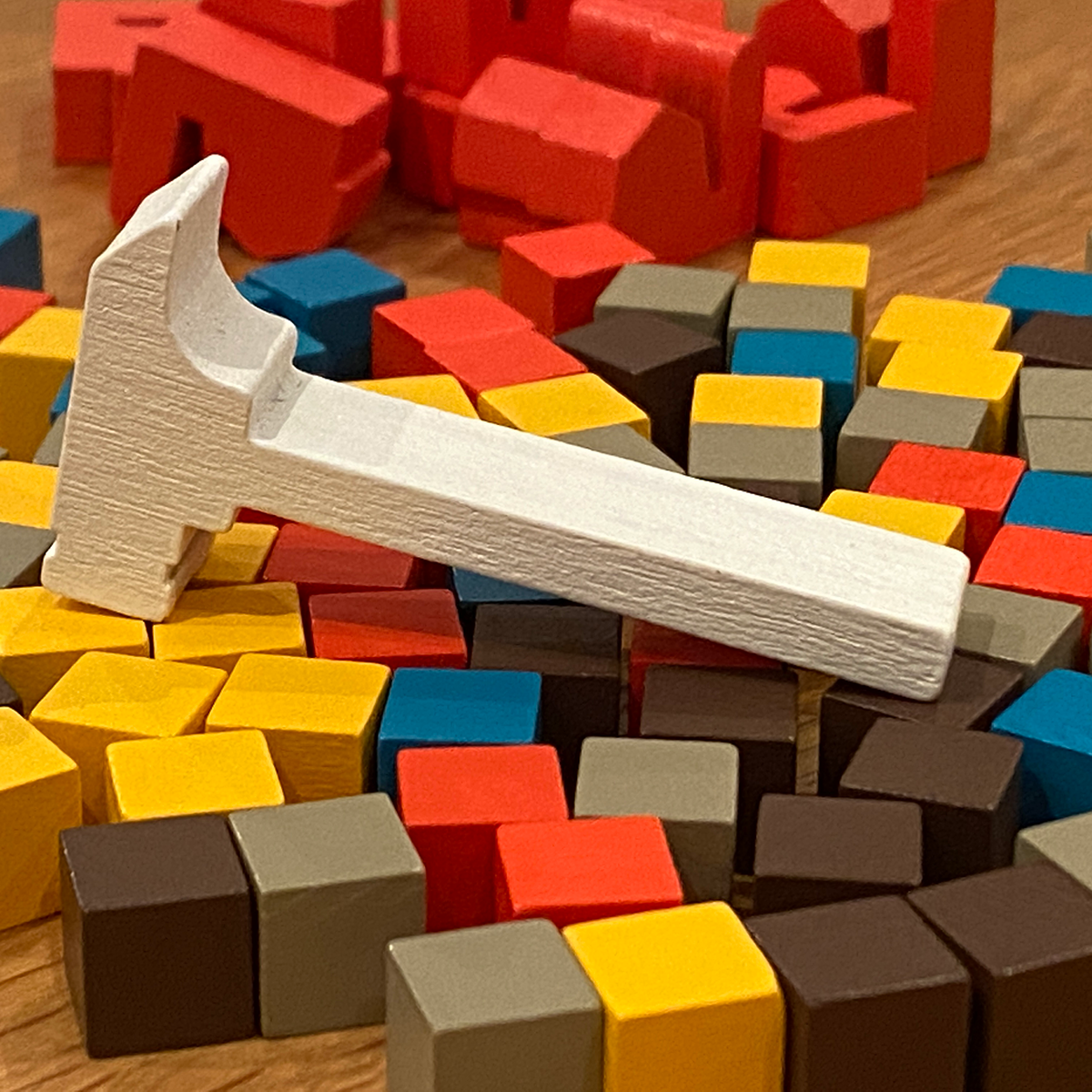
©boardgamereview.co.uk
Setup
Take a card for each different building type and place the matching wooden building components alongside. Hand each player a player board, a monument token and two monument cards, they choose one and discard the other. Give the first player the master builder token and you are ready to play.
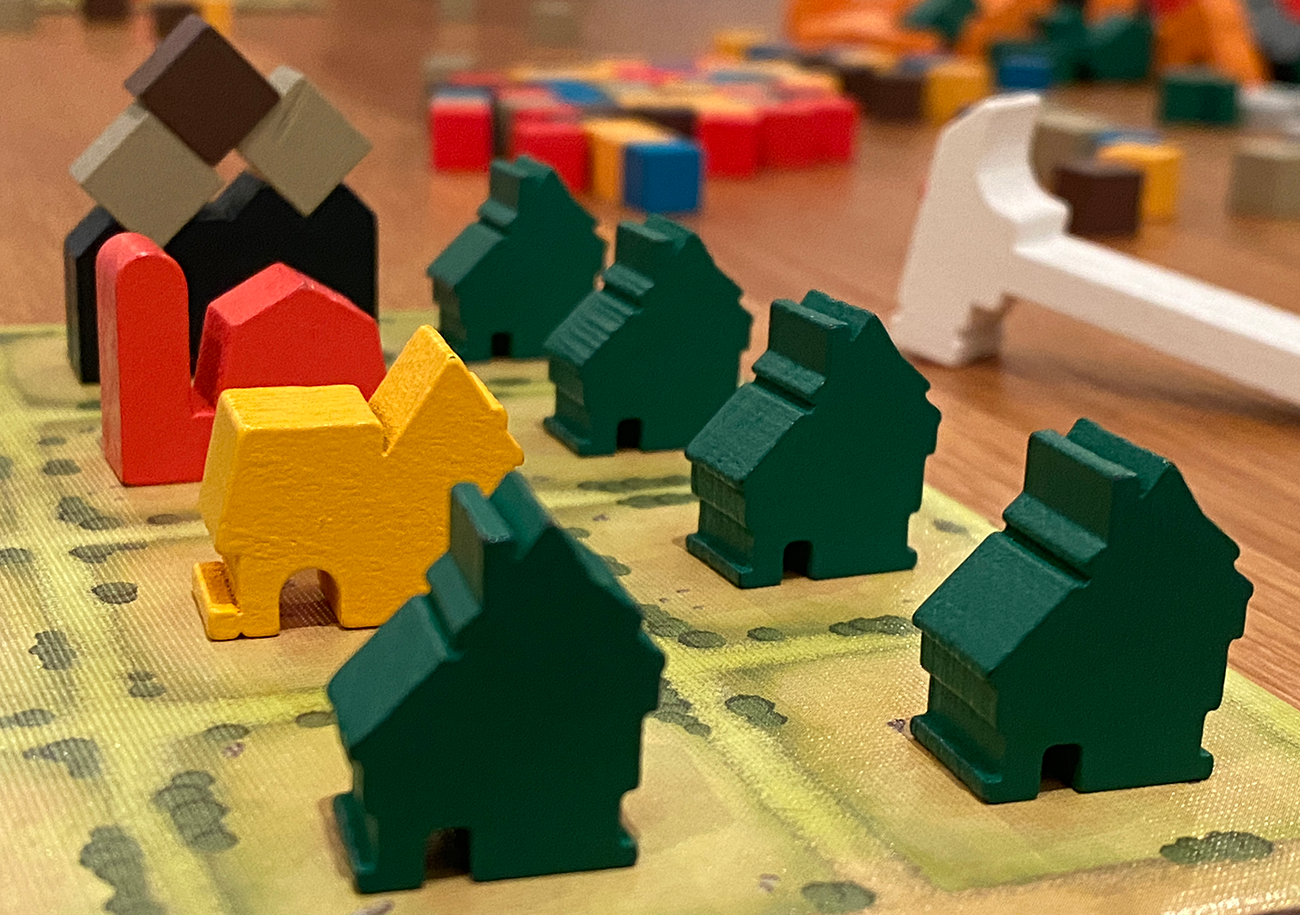
©boardgamereview.co.uk
Gameplay
In Tiny Towns you will competing with the other critters around the table to build the best little town in the forest. The master builder will choose one of the five types of resource cube and all other players will take the same resource. Every player then adds this cube to their own player board. The aim is to match the patterns on a building or monument card. When the cubes are arranged correctly, the resources can be cashed in for the relevant building. This can only be placed on one of the squares that the cubes were removed from.
Each type of building scores differently or grants unique bonuses, these vary depending on the cards used. Some will score points if next to, or away from other types of building, or allow you not to take a certain resource if another player calls it. So not only will you be aiming to place the resources in the right places, but convert these into buildings in the right place, bearing in mind that you need space to place more resources.
Your game ends when you can no longer place resources, but play will continue among other players until everyone has run out of room. Scores are then tallied and the winner announced.
There is a variant way of playing where cards are turned instead of players choosing each resource. However, I wouldn’t personally recommend that way of playing.
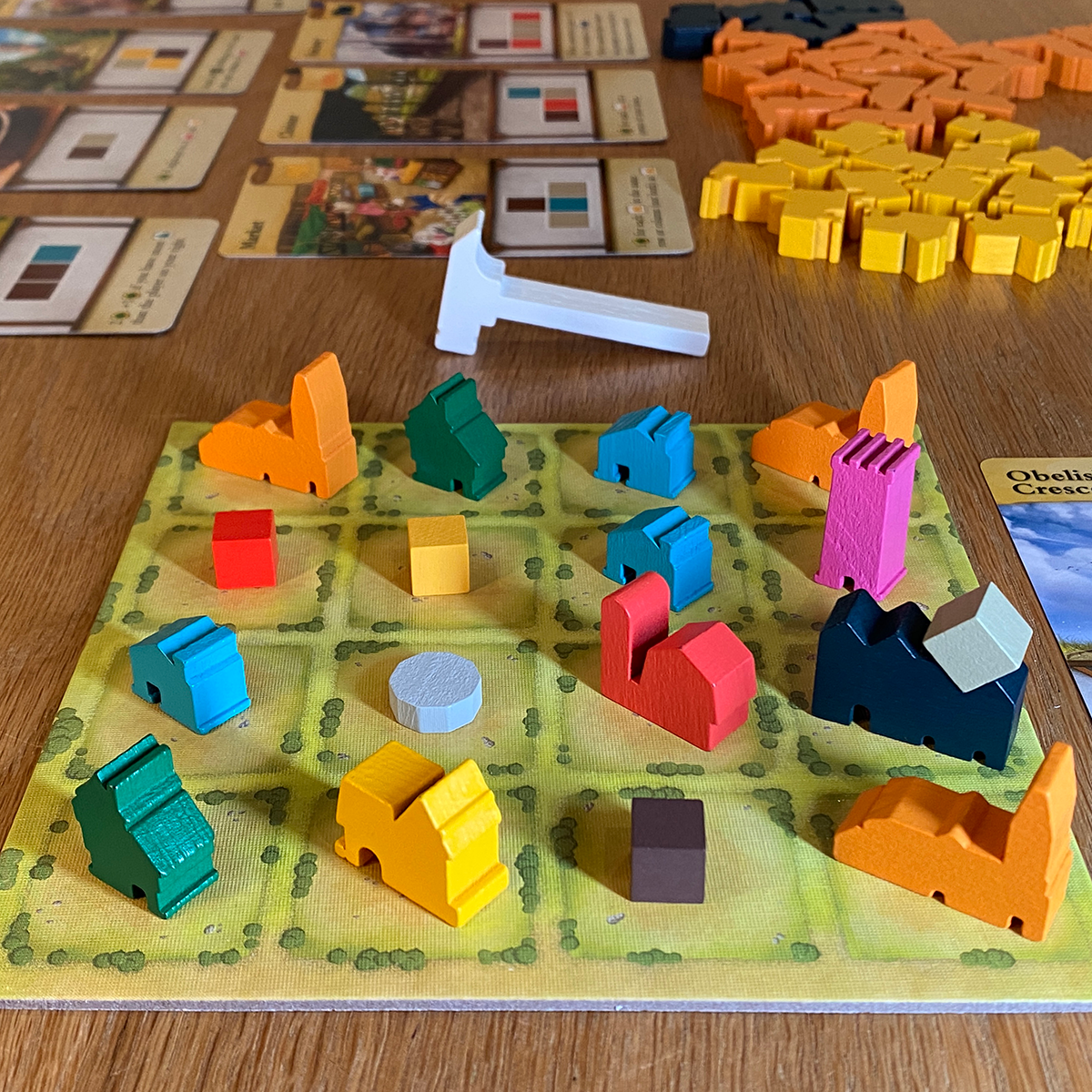
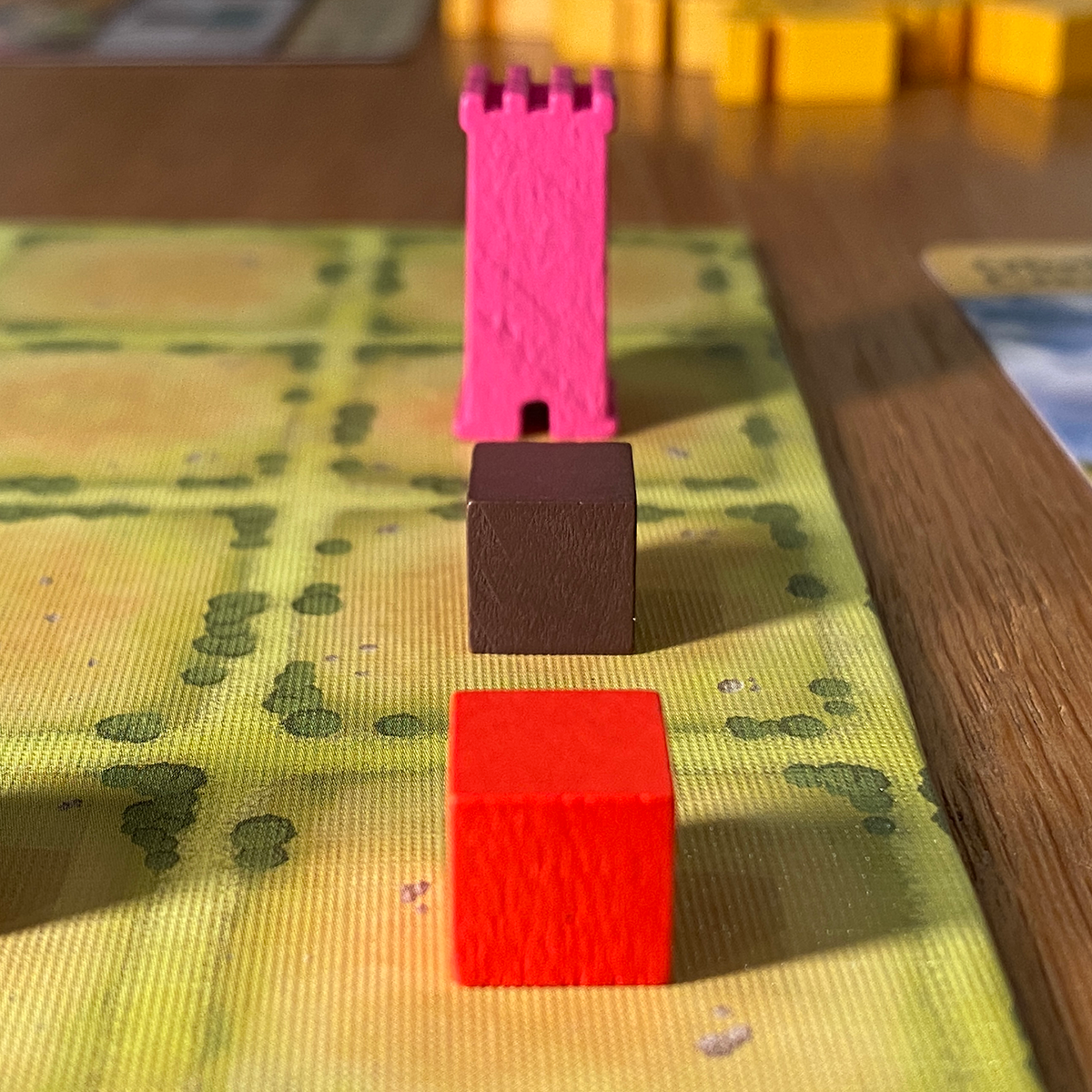
©boardgamereview.co.uk
Solo mode
Tiny Towns does have a solo mode, but I have to confess I haven’t tried it yet… when I do I will update you here, but for now, I cannot tell you how it plays solo, sorry.
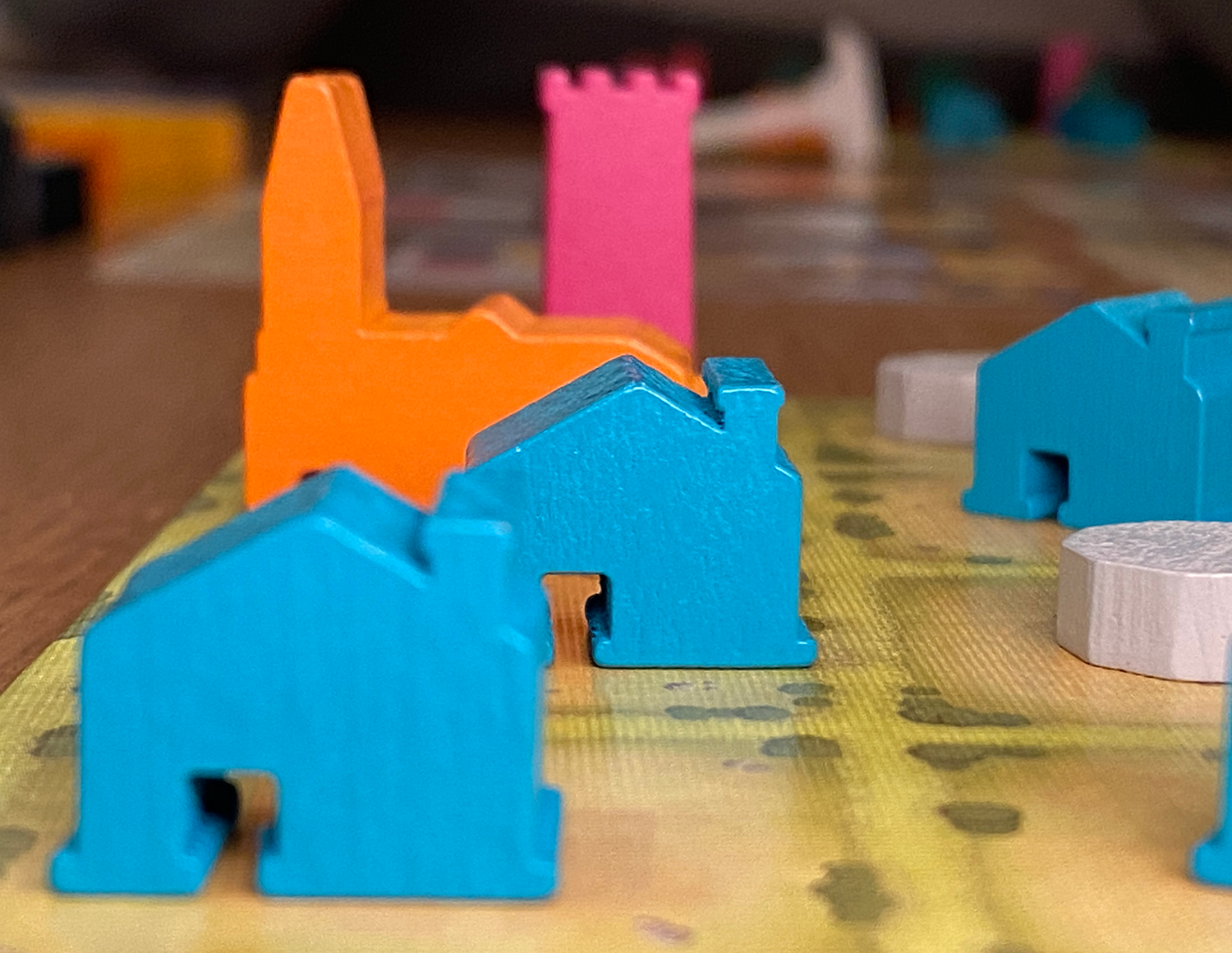
©boardgamereview.co.uk
What it’s like
Tiny Towns has the advantage of playing up to six people. As you will be placing a cube on every player’s turn, higher player counts doesn’t come with the downtime. Higher player counts does however, mean less choice, as you will only be choosing one cube in five or six. It still plays okay but the strategy is at its highest and arguably its best at three or four.
Whatever the player count, the puzzle of planning and what to place where is the main part of the game. The monuments add asymmetric benefits or scoring opportunities and are a welcome addition to the array of buildings available.
Utilising your board to its maximum is the challenge every time you play Tiny Towns. While some may baulk at their opponents picking their cubes, there is more strategy than is apparent at first glance. For example, certain cubes are more common on cards than others, or your opponents may be building towards something obvious and therefore it might be worth waiting for them to pick these cubes, rather than call for them yourself. I can imagine some calling this a multiplayer solitaire, and many will play like that, but glancing around the table can pay dividends.
However, Tiny Towns has the ability of producing a duff game too, where none of the resources go your way and the seemingly spiteful players around the table keep choosing them regardless of your requirements! This can leave a flat feeling as circumstances beyond your control conspire against you and you may end up scoring single digits.
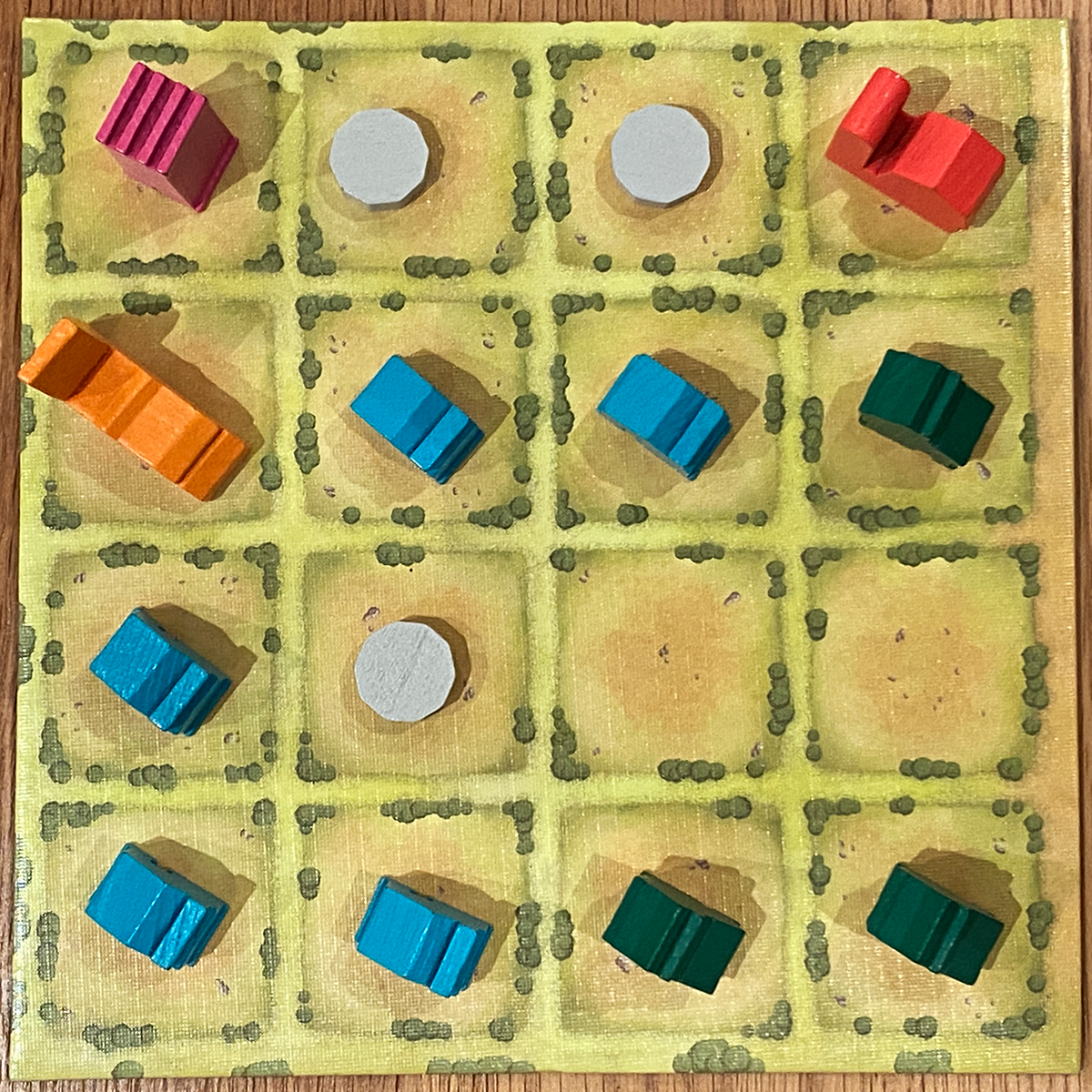
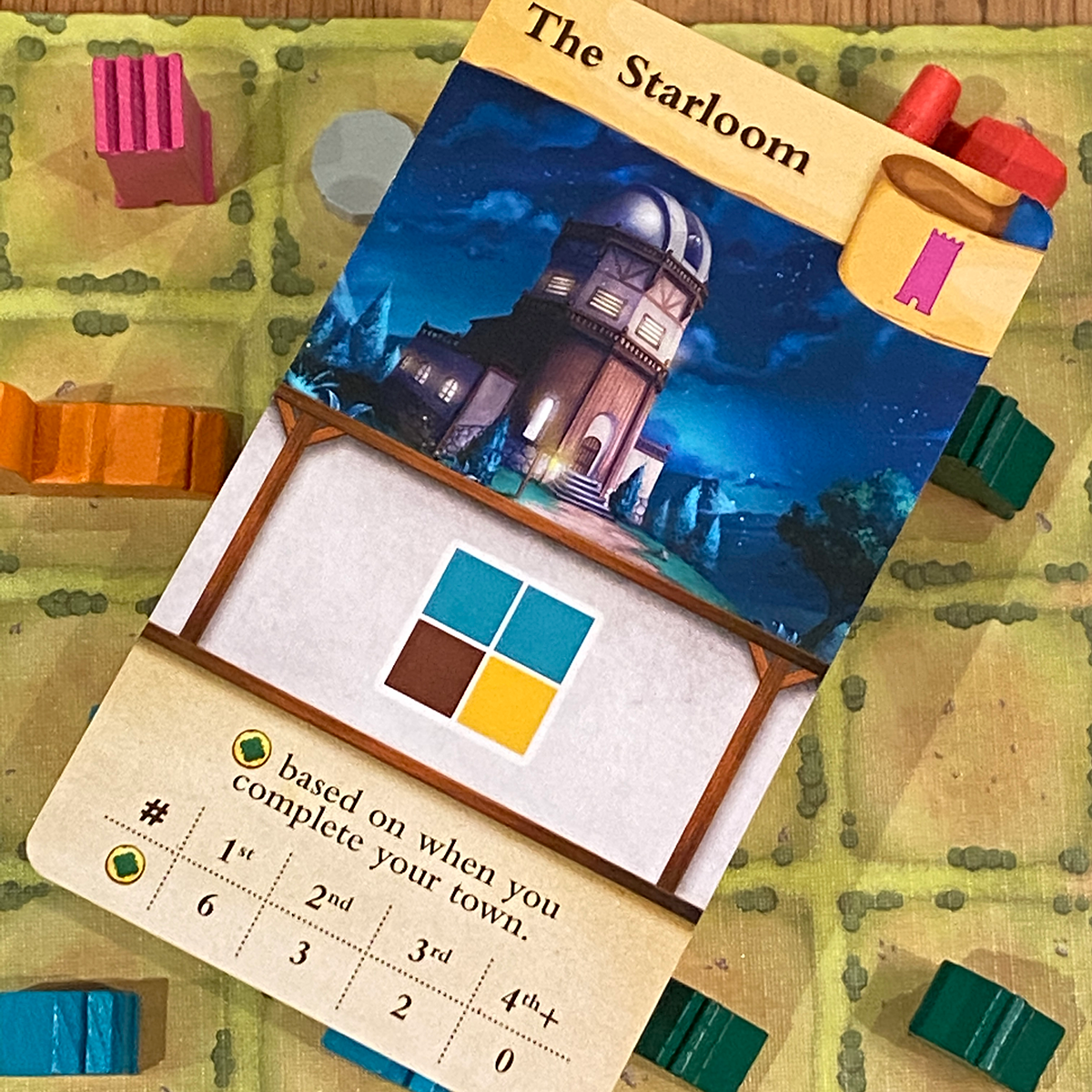
©boardgamereview.co.uk
Table Presence
The rulebook is good and will get you playing without confusion. I also like how there are recommended cards for your first few games that ease you into the game. The rulebook has some welcome card clarifications too.
The scorepad does a great job of leading the scoring. An essential component that ensures everything makes sense at the end.
All of the artwork is attractive. Some of the cards have absolutely delightful illustrations with cute critters adorned upon them. This is a vague reminder of the theme. Now I’m not one to dwell on themes in board games, but be aware Tiny Towns is much more of an abstract strategy game than the cute box art might lead you to believe.
The small buildings are colourful and fun. The orange and yellow are a bit similar, but the shape helps identify them. All in all, the component are good.
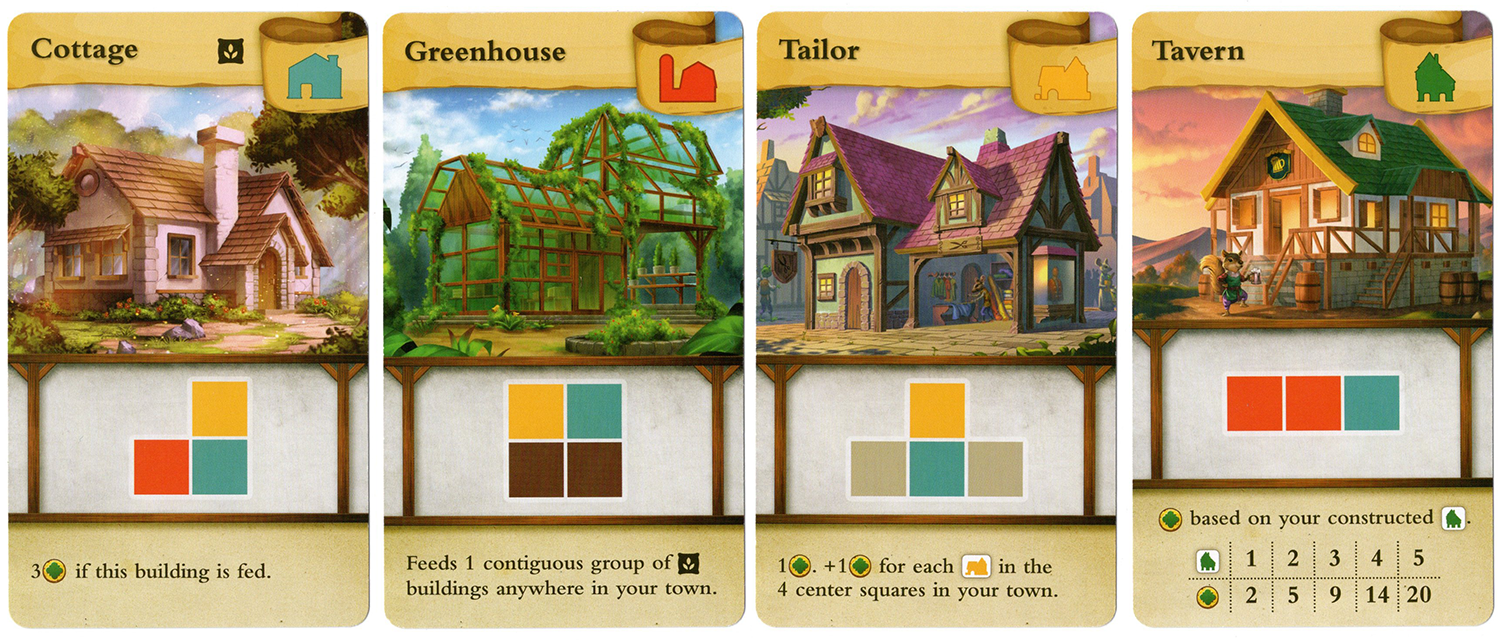
©boardgamereview.co.uk
What the kids thought
George (11): The art on the cards is nice. I like how the different buildings work and the variety of ways to score points too.
Harrison (14): It’s fine but not my favourite. I don’t like not having control with others choosing the resources. I like to plan what I am going to do and this can really muck up my gameplan. Especially if someone is being mean and picking the same resource regularly.
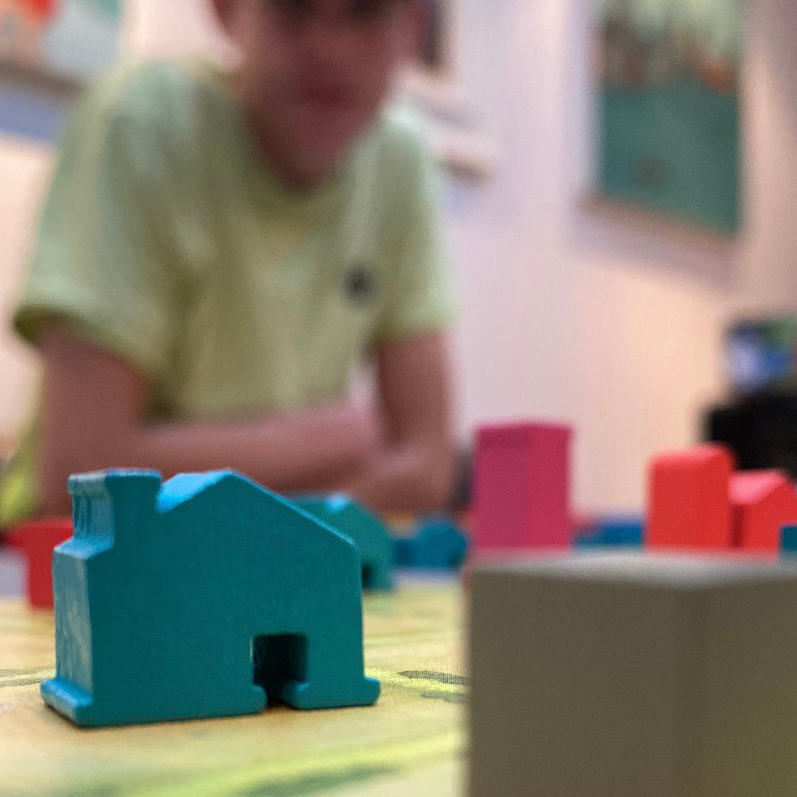
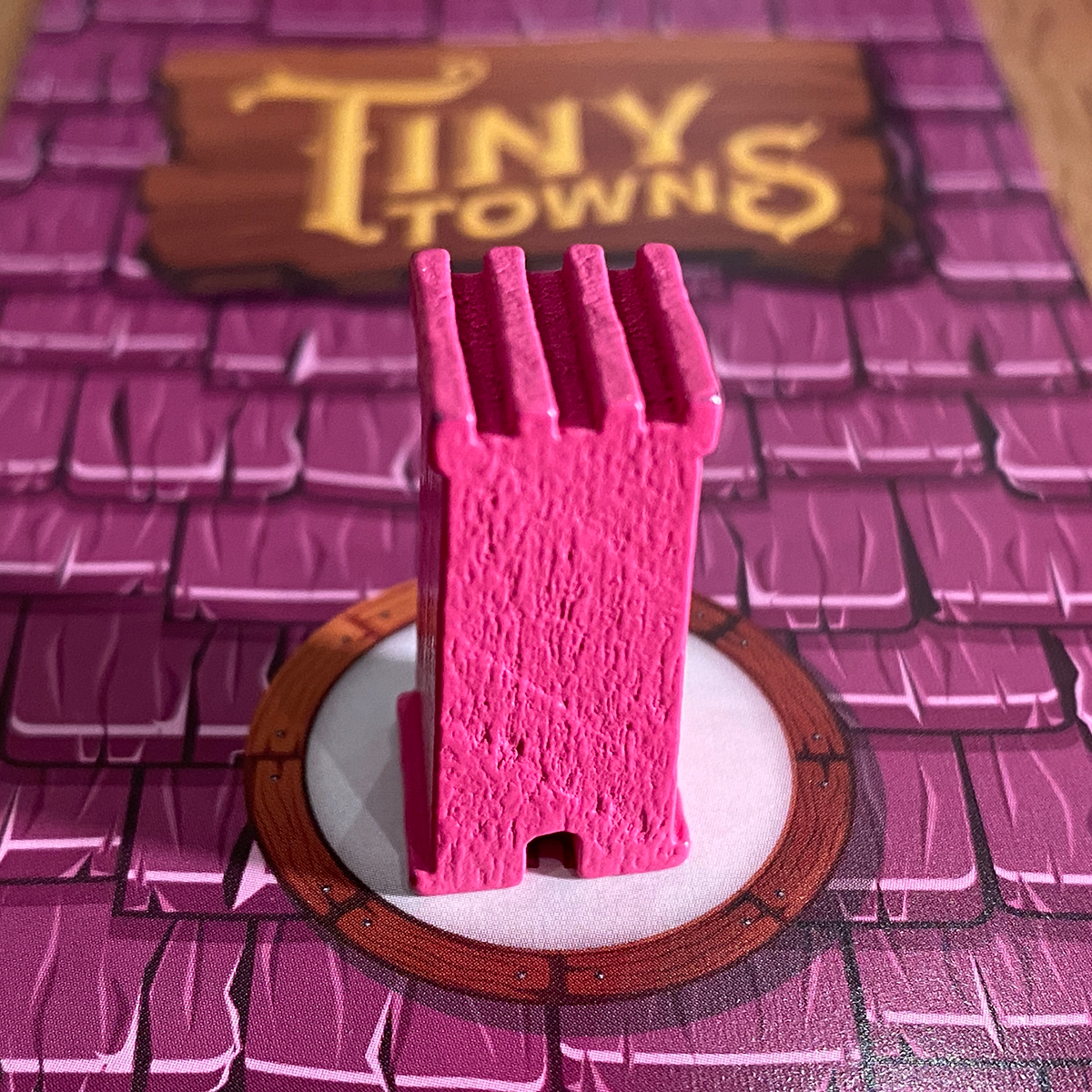
©boardgamereview.co.uk
Final thoughts on Tiny Towns
Tiny Towns is a really good entry level board game for up to six players with very little down time. It’s an abstract puzzle where future you will regularly curse past you for where you placed a cube. This is a game where hindsight is truly a wonderful thing.
I wish I had taken the plunge for Tiny Towns when it first came out as I would’ve enjoyed it and played it even more back then. Don’t get me wrong it will still hit the table plenty, but I know this would’ve been a big hit had I owned it earlier in my board gaming adventures.
There are two expansions already available. Tiny Towns: Villagers adds visiting creatures and may make the theme a bit more apparent. Tiny Towns: Fortune adds money and trading. I am intrigued to see what the expansions would add to this one. I’d like to think they would help grow the game with the experience of those at the table. But I haven’t played them yet so it is only conjecture!
Key Facts
Number of players: 1 to 6
Board Game Review Recommended Age: 10+
Publisher’s Recommended Age: 14+
Playing Time: 50 minutes
Setting Up and Take Down Time: 3 minutes
Designers: Peter McPherson
Publisher: Alderac Entertainment Group
RRP: £49.99
Summary
There is a lot to like about Tiny Towns. It plays up to six people and the play time doesn’t particularly change either. It particularly shines as an entry-level game. I might not recommend starting here, but I would certainly add it onto my list of recommendations for higher player counts and those newer to the hobby.
-
Artwork and Components
-
Complexity
-
Instructions
-
Interaction
-
Value for Money
Overall
Pros
- Little downtime regardless of number of players
- Entry level game with plenty to think about
- Scales nicely between player counts, from solo to six
- Expansions available
Cons
- Sometimes you will just have a terrible game
- Occasionally feels like you have a lack of control
- Some levels can be frustrating through sheer bad luck
- Theme doesn’t shine through
- Waiting for the game to finish if you’re first out
Need more games?
If you already own Tiny Towns and enjoy it, or are looking for other inspiration, you might also like these similar games:
- Everdell
- Planet Unknown
- Little Town
- My City
Buy Tiny Towns
If you want to buy Tiny Towns after reading our review click on one of our affiliate links below (note there has been no affiliate links until this point)
Reviewer’s Note
For clarity: we don’t get paid for our reviews. However, we were kindly gifted this game by Alderac Entertainment Group (AEG). We have tried not to let this affect our review in any way.
We may however earn a tincy wincy commission if you buy a game having clicked one of our affiliate links like the one above… this hopefully gives us a bit of pocket money towards hosting costs and new games to review!
As an Amazon Associate I earn from qualifying purchases.
Board Game Review is a brand ambassador for Out of Town Games.
We also are an affiliate of Board Game Prices, a price comparison website for Board Games.
These affiliate advertising programs are designed to provide a means for sites to earn advertising fees by advertising and linking to their websites.
